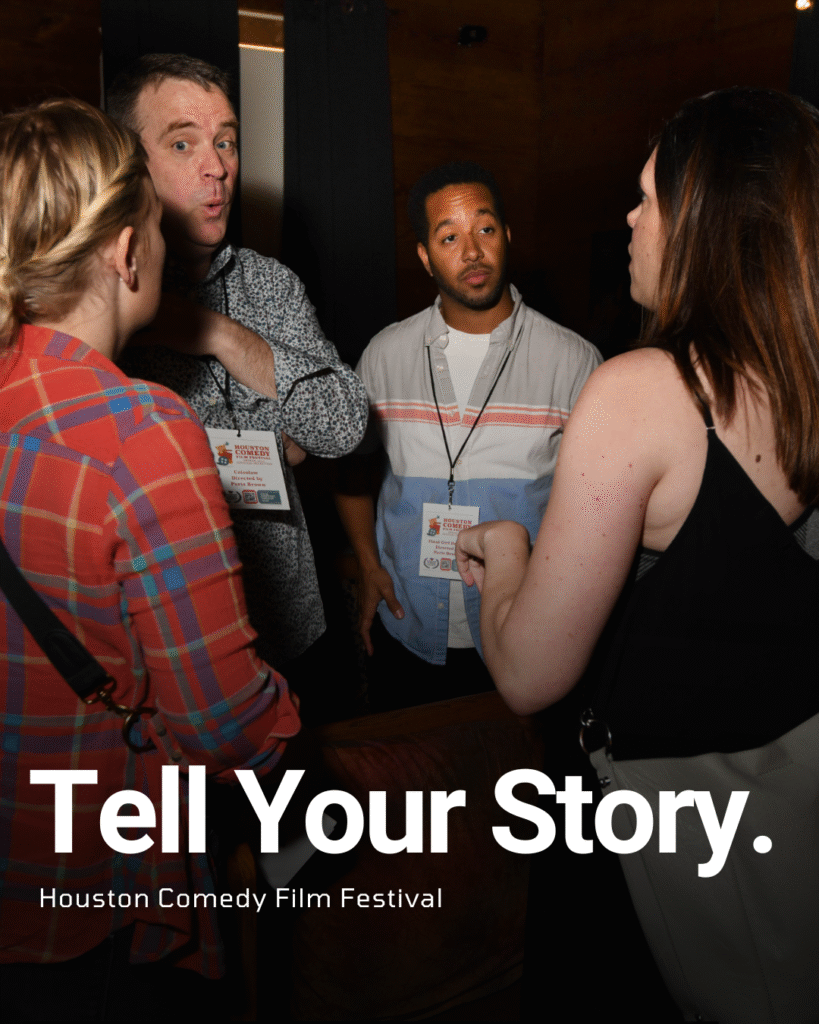Tech
Gen Alpha Can’t Read—But It’s Okay, Because We Have AI Now
A New Generation Faces Old Problems—With New Tools
The rise of Generation Alpha—kids born from 2010 onwards—has been marked by a constant presence of technology. For many, screens and smart devices have been a part of daily life since birth. Yet, despite this digital immersion, a troubling trend has emerged: literacy and foundational academic skills are in decline.

The Reading Crisis: Alarming Numbers and Real Stories
Across the United States, literacy rates among young students have plummeted. In 2020, 40% of first graders were well below grade level in reading, up from 27% in 2019. Teachers report that many students cannot recognize letters or their sounds, and some fifth graders are reading at a second or third grade level. The problem persists through middle school, with nearly 70% of eighth graders scoring below proficient in reading in 2022, and 30% scoring below basic.
Anecdotes from classrooms and everyday encounters underscore the severity. One teacher describes students unable to identify what letter comes after “C” in the alphabet—even in sixth, seventh, and eighth grade. Another recounts an eight-year-old unable to read a simple menu at a restaurant.
Math and More: A Broader Academic Slide
It’s not just reading. Math scores have also dropped: in 2023, only 56% of fourth graders were performing at grade level, down from 69% in 2019. The pandemic exacerbated these problems, but the decline began before remote learning, indicating deeper, systemic issues.
Why Is This Happening?
Several factors contribute to this crisis:
- Overreliance on Technology: Kids often use devices for entertainment rather than learning, and many now rely on tools like ChatGPT to do their homework, reducing opportunities to develop critical thinking and problem-solving skills.
- Educational Shifts: Decades ago, schools moved away from phonics-based reading instruction to a “three cueing” system, which encourages guessing words from context rather than decoding them. This has left many students without the skills to sound out unfamiliar words.
- Teacher Shortages and Overcrowded Classrooms: The pandemic led to a mass exodus of teachers, resulting in larger class sizes and less individual attention for students.
- Parental Involvement: Many parents are less hands-on with academics, assuming technology or schools will fill the gap.

The Role of AI: Problem or Solution?
Artificial intelligence is both a challenge and an opportunity. On one hand, students can use AI to bypass learning—having it write essays or solve problems for them. On the other, AI-powered educational tools can personalize learning, fill gaps, and provide interactive practice across subjects. Programs designed by educational experts can help children catch up, especially when parents are proactive about supplementing schoolwork.
What Can Be Done?
- Re-emphasize Foundational Skills: Schools need to return to evidence-based methods like phonics for reading instruction and ensure mastery of basic math skills.
- Smaller Class Sizes and More Support: Addressing teacher shortages and providing more individualized attention can help struggling students catch up.
- Parental Engagement: Parents should supplement classroom learning with activities at home and use trusted online resources to reinforce skills.
- Responsible Use of Technology: Teach children to use AI as a learning tool, not a shortcut, and encourage critical thinking and problem-solving.

Conclusion: The Future Is Still Unwritten
Gen Alpha faces unprecedented academic challenges, but with the right interventions—combining human teaching, parental involvement, and responsible use of AI—there is hope for a turnaround. The key is not to abandon technology, but to harness its power for learning, ensuring that the next generation is not only tech-savvy but truly educated.
Business
Harvard Grads Jobless? How AI & Ghost Jobs Broke Hiring

America’s job market is facing an unprecedented crisis—and nowhere is this more painfully obvious than at Harvard, the world’s gold standard for elite education. A stunning 25% of Harvard’s MBA class of 2025 remains unemployed months after graduation, the highest rate recorded in university history. The Ivy League dream has become a harsh wakeup call, and it’s sending shockwaves across the professional landscape.

Jobless at the Top: Why Graduates Can’t Find Work
For decades, a Harvard diploma was considered a golden ticket. Now, graduates send out hundreds of résumés, often from their parents’ homes, only to get ghosted or auto-rejected by machines. Only 30% of all 2025 graduates nationally have found full-time work in their field, and nearly half feel unprepared for the workforce. “Go to college, get a good job“—that promise is slipping away, even for the smartest and most driven.
Tech’s Iron Grip: ATS and AI Gatekeepers
Applicant tracking systems (ATS) and AI algorithms have become ruthless gatekeepers. If a résumé doesn’t perfectly match the keywords or formatting demanded by the bots, it never reaches human eyes. The age of human connection is gone—now, you’re just a data point to be sorted and discarded.
AI screening has gone beyond basic qualifications. New tools “read” for inferred personality and tone, rejecting candidates for reasons they never see. Worse, up to half of online job listings may be fake—created simply to collect résumés, pad company metrics, or fulfill compliance without ever intending to fill the role.
The Experience Trap: Entry-Level Jobs Require Years
It’s not just Harvard grads who are hurting. Entry-level roles demand years of experience, unpaid internships, and portfolios that resemble a seasoned professional, not a fresh graduate. A bachelor’s degree, once the key to entry, is now just the price of admission. Overqualified candidates compete for underpaid jobs, often just to survive.
One Harvard MBA described applying to 1,000 jobs with no results. Companies, inundated by applications, are now so selective that only those who precisely “game the system” have a shot. This has fundamentally flipped the hiring pyramid: enormous demand for experience, shrinking chances for new entrants, and a brutal gauntlet for anyone not perfectly groomed by internships and coaching.
Burnout Before Day One
The cost is more than financial—mental health and optimism are collapsing among the newest generation of workers. Many come out of elite programs and immediately end up in jobs that don’t require degrees, or take positions far below their qualifications just to pay the bills. There’s a sense of burnout before careers even begin, trapping talent in a cycle of exhaustion, frustration, and disillusionment.
Cultural Collapse: From Relationships to Algorithms
What’s really broken? The culture of hiring itself. Companies have traded trust, mentorship, and relationships for metrics, optimizations, and cost-cutting. Managers no longer hire on potential—they rely on machines, rankings, and personality tests that filter out individuality and reward those who play the algorithmic game best.
AI has automated the very entry-level work that used to build careers—research, drafting, and analysis—and erased the first rung of the professional ladder for thousands of new graduates. The result is a workforce filled with people who know how to pass tests, not necessarily solve problems or drive innovation.
The Ghost Job Phenomenon
Up to half of all listings for entry-level jobs may be “ghost jobs”—positions posted online for optics, compliance, or future needs, but never intended for real hiring. This means millions of job seekers spend hours on applications destined for digital purgatory, further fueling exhaustion and cynicism.
Not Lazy—Just Locked Out
Despite the headlines, the new class of unemployed graduates is not lazy or entitled—they are overqualified, underleveraged, and battered by a broken process. Harvard’s brand means less to AI and ATS systems than the right keyword or résumé format. Human judgment has been sidelined; individuality is filtered out.

What’s Next? Back to Human Connection
Unless companies rediscover the value of human potential, mentorship, and relationships, the job search will remain a brutal numbers game—one that even the “best and brightest” struggle to win. The current system doesn’t just hurt workers—it holds companies back from hiring bold, creative talent who don’t fit perfect digital boxes.
Key Facts:
- 25% of Harvard MBAs unemployed, highest on record
- Only 30% of 2025 grads nationwide have jobs in their field
- Nearly half of grads feel unprepared for real work
- Up to 50% of entry-level listings are “ghost jobs”
- AI and ATS have replaced human judgment at most companies
If you’ve felt this struggle—or see it happening around you—share your story in the comments. And make sure to subscribe for more deep dives on the reality of today’s economy and job market.
This is not just a Harvard problem. It’s a sign that America’s job engine is running on empty, and it’s time to reboot—before another generation is locked out.
News
Governments Worldwide Push for Mandatory Digital IDs by 2026

Governments around the world are accelerating their push toward national digital identification systems, promising convenience and security while raising concerns over privacy, surveillance, and government control. By 2026, the European Union will require every member state to implement a national digital identity wallet, and the United Kingdom plans to make digital ID mandatory for the “Right to Work” by the end of its current Parliament.
United Kingdom Leads the Charge
In September 2025, British Prime Minister Keir Starmer announced plans for a free, government-backed digital ID system for all residents. The initiative—temporarily called “BritCard”—will become a mandatory requirement for employment checks, designed to curb illegal migration and simplify access to services such as tax filing, welfare, and driving licenses.
While the government argues that digital ID will make it “simpler to prove who you are” and reduce fraud, civil liberties groups have raised alarms. Big Brother Watch called the plan “wholly un-British,” warning it would “create a domestic mass surveillance infrastructure”.
Officials state the new system will use encryption and biometric authentication, with credentials stored directly on smartphones. For those without smartphones, the plan includes support programs and alternatives.
Europe Mandates a Digital Identity Wallet
Across the European Union, the Digital Identity Wallet—developed under the eIDAS 2.0 Regulation—will become law by 2026, obligating all 27 member states to provide citizens with a secure app that integrates identification, travel, and financial credentials. The European Commission envisions the wallet as a single login for public and private services across borders, from banking to healthcare, using cryptographic protections to ensure data privacy.

United States Expands Mobile IDs
The United States does not have a national digital ID system but is quickly adopting state-level mobile IDs. More than 30 states have launched or are testing digital driver’s licenses stored on phones via Apple Wallet, Google Wallet, or state apps. States such as Louisiana and Arizona already accept mobile IDs for TSA airport checks, and similar legislation is advancing in New Jersey, Pennsylvania, and Georgia.
Meanwhile, private firms like ID.me and CLEAR have enrolled millions of Americans in digital identity programs, often partnering with government agencies and raising questions about data use and inclusion for low-income groups.
Global Adoption and UN Involvement
The trend extends well beyond Western nations. China’s national digital ID, launched in 2025, is connected to its social credit system, combining financial records, travel rights, and online behavior tracking. Singapore, South Korea, Nigeria, and the UAE have each implemented government-backed ID systems that link citizens’ digital credentials to public and private services ranging from taxes to utilities.
The movement aligns with the United Nations’ goal of providing “legal identity for all by 2030,” supported by the World Bank’s ID4D (Identification for Development) initiative, which funds digital identity infrastructure in over 100 countries.
The Promise and the Peril
Proponents argue that digital IDs offer protection against identity fraud, save governments billions in paperwork, and bring roughly one billion undocumented citizens into legal recognition systems globally. Estonia, for instance, saves an estimated 2% of its GDP annually through digitized services, while India’s Aadhaar ID has reduced welfare fraud by $10 billion per year.
However, critics warn that centralizing identity creates unprecedented control risks. Once personal data, biometrics, and financial access are linked, governments could more easily restrict rights or track behavior.
As one analyst put it, the shift may mark “a turning point in the balance of power between citizens, corporations, and the state”.
The global rollout of digital IDs is reshaping the definition of identity itself—raising the question of whether convenience and efficiency come at too high a cost to freedom.
Tech
Massive Global Outage Cripples Major Websites and Online Services

A widespread global outage on Monday disrupted access to thousands of popular websites and digital platforms, sparking confusion and frustration among users worldwide. From social media giants to e-commerce platforms, financial portals, and even news outlets, the internet temporarily went dark for millions of people.

The outage began around 8:00 a.m. CDT, affecting users across North America, Europe, Asia, and parts of Africa. Initial reports suggest the incident may stem from a major disruption in a core internet infrastructure provider — possibly linked to a content delivery network (CDN) failure or a major domain name system (DNS) malfunction.
Major Services Impacted
Websites like Amazon, YouTube, and major news publishers experienced significant downtime, with many displaying server errors or failing to load completely. Streaming services, banking apps, and communication platforms such as Slack and Zoom were also hit, paralyzing workflows and transactions globally.
Companies quickly took to social media to acknowledge the issue. “We’re aware of a widespread internet disruption affecting multiple services and are working urgently to identify the cause,” one major cloud provider said in a statement.
Economic Ripple Effects
Experts warn that even short-term outages on this scale can cause enormous economic damage. “Every minute of downtime for global websites can translate to millions in lost revenue,” said cybersecurity analyst Reuben Chen. “It also highlights how dependent modern systems are on a relatively small number of infrastructure providers.”
Stock market and cryptocurrency trading platforms experienced temporary halts, while travel and logistics companies reported booking delays and communication breakdowns.

Unfolding Investigation
As of this afternoon, technicians and cybersecurity experts are still tracing the root cause of the outage. Early investigations indicate a possible software update gone wrong, though some analysts have not ruled out a coordinated cyberattack on critical internet backbones.
Government agencies in several countries have initiated inquiries into the disruption’s scope and origin, emphasizing the fragility of global digital networks that power everything from commerce to healthcare.
By late afternoon, services were beginning to recover in phases, though users continued to report intermittent access issues. The incident serves as a stark reminder of the interconnected nature of the internet — and how a single point of failure can send shockwaves through the digital world.

 Entertainment2 weeks ago
Entertainment2 weeks agoAfter Party: Festival Winner for Best Romantic Short

 News2 weeks ago
News2 weeks agoCamp Wackapoo – Rise of Glog Takes Center Stage

 Entertainment2 weeks ago
Entertainment2 weeks agoFrancisco Ramos Takes Top Mockumentary Award at Houston Comedy Film Festival

 Politics2 weeks ago
Politics2 weeks agoTrump’s $2,000 Tariff Dividend Plan: Who Gets Paid?

 Politics3 weeks ago
Politics3 weeks agoMamdani’s Victory Triggers Nationwide Concern Over New York’s Future

 News2 weeks ago
News2 weeks ago50-Year Mortgages: A Game Changer or a Debt Trap?

 Film Production2 weeks ago
Film Production2 weeks agoWhy China’s 2-Minute Micro Dramas Are Poised To Take Over The U.S.

 News1 week ago
News1 week agoYolanda Adams Questions Traditional Views on God’s Gender, Audience Reacts










































